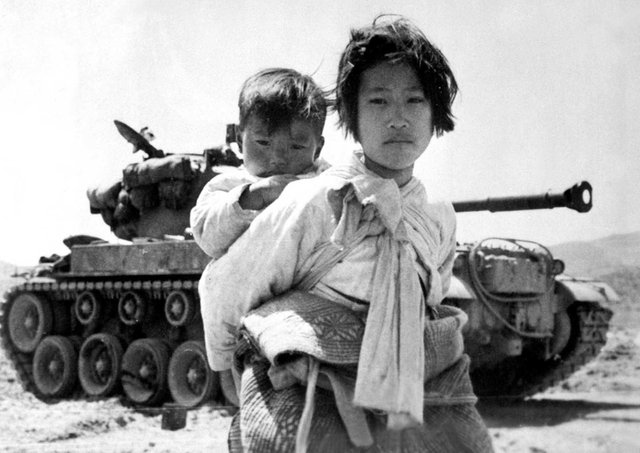1951 - Korean War
Korean War - the intervention of Chinese troops forces UN troops into a retreat back to the 38th parallel, followed by stalemate as neither side proves capable of a decisive breakthrough.

Following the Chinese offensive that pushed UN troops back past the 38th parallel morale was low. However, the new field commander, General Ridgway, revived his heterogeneous command and advanced slowly north in the spring of 1951. By mid-April, the allies were back in the area of the 38th parallel when the Chinese launched their spring offensive. The British 29th Brigade narrowly escaped annihilation on the Imjin river as the 27th Commonwealth brigade on the central front beat off savage Chinese attacks.
The UN line held, then moved north again. This time, there was no reckless advance into the north. The line stabilised in the general area of the 38th parallel and the remaining two years of fighting consisted of near-static operations as both sides fought from heavily fortified positions, using artillery, mines and wire to deny the enemy access to strategically important ground.
Throughout the war, air power was decisive. The North Korean air force was driven from the skies by US Air Force, Navy and Marines, using their superior equipment and training. Heavy bombers razed the cities and industrial plants of North Korea. Continuous attacks on the transport system forced the Chinese to rely on the packhorse for much of their logistical support. A new phase of air war opened when American B-29 bombers and their fighter escorts were challenged by Russian-built MiG-15 fighters flown by Chinese airmen. The MiG-15's outflew first-generation American jet fighters until the introduction of the swept-wing F-86 Sabre tipped the balance. In the world's first supersonic air combats, the Americans prevailed.
The allies achieved total naval supremacy when the North Korean navy's torpedo boats were blown out of the water by UN firepower. For the rest of the war, American, British, Commonwealth and other allied ships maintained a tight blockade on North Korea. In addition, naval aviation played a leading role in air support of the army on the ground.
In mid-1951, with the land battle in stalemate, both sides agreed to go to the conference table and armistice talks began. They dragged on for two years.
Get a further glimpse into this bitter conflict at History0x